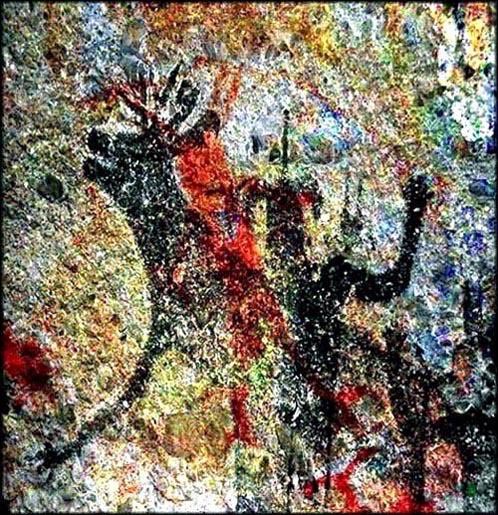Through its flaws and fissures stone absorbs the frequencies of minerals we've mixed into "reservoirs of potency."
"ochres varied in shade from orange-brown to scarlet and were traded to the Chumash Indians from Tulare County and from Santa Rosa Island. This ethnographic information is confirmed by site examination of ochres used by the Chumash: the colour range is from orange to scarlet. Hilhil was a name for red ochre and ilil was a red paint used for body painting. The Mojave Indians brought a bright red ilil while ohat was a red ochre obtained from the Yuma and Mohave Indians."
Red is where the Tripitaka hid "when suffering took the shape of a fist." Black is night turned inside out, caught in the shadow of its hidden god. "Blue and green are quite rare." White reflects the ekistical heart of stone. In tones of brown ochre, the earth upholds the unfathomable depth of life.
"In the natural world or in a laboratory, an outer change in the color of something can mean its inner nature is reorganizing and transforming." Like a person after makeup's applied, color brushed onto a face of stone changes its interior mood.
In a dream, i recalled the colors
from another dream: one dream
shading the other.
Red
is "the center, the 'summit' of the world." It
is also symbolic of war, morphing brown as blood
flows from wounds and leaches
into
earth. White + black =
gray
Old Woman Stone, in whom elemental wisdom
continues to incubate.
